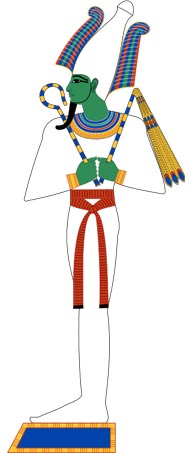About the Caches of the Gods
There are sixteen caches of the gods. Each cache contains a key to unlocking the special Pyramid Cryptex device which holds the secret location of the Pharaoh's Treasure (GC5JTAJ).
Twelve of the gods have true keys to the device, while four of the gods have false keys to mislead the careless adventurer. Each key can be found in the form of a symbol on the inside of the lid of the cache container.
The true keys must be discovered by visiting the god's caches and recording the key's image. once all twelve keys have been found you must determine their correct order and dial them into the levels of the Pyramid Cryptex.
If you successfully open the device, you will receive the final location of the Pharaoh's Treasure. If you are the first to open the device, your reward will be great indeed!
While not required, it is suggested that a digital camera to snap a shot of the keys for reference while solving the puzzle might be a good idea. Please do not share pictures of the keys with any other adventurers.
About Osiris

Osiris was the Egyptian god usually identified as the god of the afterlife, the underworld and the dead. He was classically depicted as a green-skinned man with a Pharaoh's beard, partially mummy-wrapped at the legs, wearing a distinctive crown with two large ostrich feathers at either side, and holding a symbolic crook and flail.
Osiris was at times considered the oldest son of the earth god Geb, and the sky goddess Nut, as well as being brother and husband of Isis, with Horus being considered his posthumously begotten son. He was also associated with the epithet Khenti-Amentiu, which means "Foremost of the Westerners" — a reference to his kingship in the land of the dead. As ruler of the dead, Osiris was also sometimes called "king of the living", since the Ancient Egyptians considered the blessed dead "the living ones". Osiris was considered the brother of Isis, Set, Nephthys, Horus the Elder and father of Horus the younger. Osiris is first attested in the middle of the Fifth dynasty of Egypt, although it is likely that he was worshipped much earlier; the term Khenti-Amentiu dates to at least the first dynasty, also as a pharaonic title. Most information available on the myths of Osiris is derived from allusions contained in the Pyramid Texts at the end of the Fifth Dynasty, later New Kingdom source documents such as the Shabaka Stone and the Contending of Horus and Seth, and much later, in narrative style from the writings of Greek authors including Plutarch and Diodorus Siculus.
Osiris was considered not only a merciful judge of the dead in the afterlife, but also the underworld agency that granted all life, including sprouting vegetation and the fertile flooding of the Nile River. He was described as the "Lord of Love", "He Who is Permanently Benign and Youthful" and the "Lord of Silence". The Kings of Egypt were associated with Osiris in death — as Osiris rose from the dead they would, in union with him, inherit eternal life through a process of imitative magic. By the New Kingdom all people, not just pharaohs, were believed to be associated with Osiris at death, if they incurred the costs of the assimilation rituals.
Through the hope of new life after death, Osiris began to be associated with the cycles observed in nature, in particular vegetation and the annual flooding of the Nile, through his links with the heliacal rising of Orion and Sirius at the start of the new year. Osiris was widely worshipped as Lord of the Dead until the suppression of the Egyptian religion during the rise of Christianity in the Roman Empire.